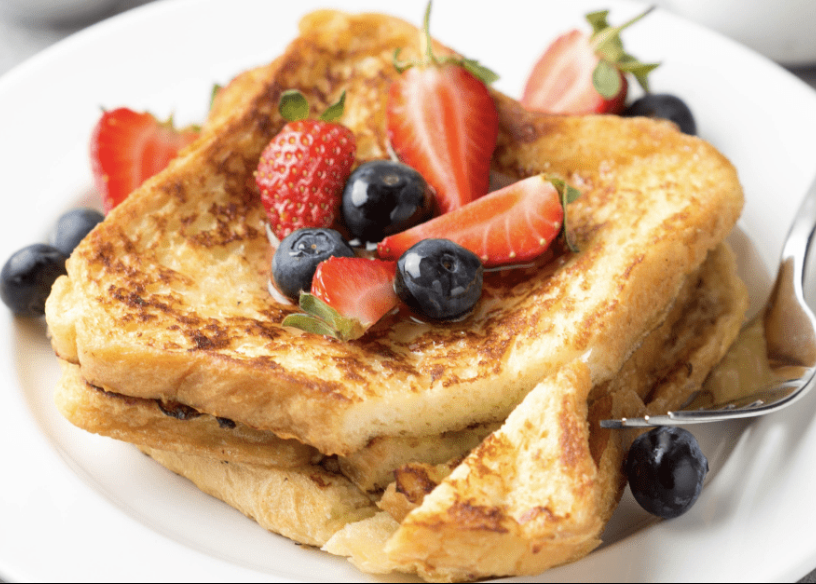

In 1887, a recipe for American Toast appeared in the White House Cookbook. It called for soaking and cooking bread in the same manner as French toast.
In France, the dish is called “pain perdu,” meaning “lost bread.” Why lost bread? Originally, people made French toast from stale bread in order to make use of bread that would otherwise have been thrown away.
In the United States, restaurants usually serve French toast with butter, maple syrup and powdered sugar, but the possibilities are endless. French toast can be topped with just about anything.
The earliest known reference to French toast is in the Apicius, a collection of Latin recipes dating to the 4th or 5th century, where it is described as simply aliter dulcia (“another sweet dish”). The recipe says to “slice fine white bread, remove the crust, and break it into large piece. Soak these pieces in milk and beaten egg, fry in oil, and cover with honey before serving.
The actual term for French toast goes back to at least 17th century England. Early settlers brought the term and the recipe with them to America where it continued to spread in popularity. The phrase “French Toast” first appeared in print in the Encyclopedia of American Food and Drink in 1871.
French toast is a dish made of sliced bread soaked in eggs and milk, then fried. Alternative names and variants include Spanish toast, German toast, nun’s toast, eggy bread, torrija, poor knights of Windsor, Bombay toast and many others. The origins of French toast are not entirely clear, but long before this sweet snack was called “French toast,” similar recipes were being whipped up all around the world. One of the earliest versions of French toast has been traced back to the Roman Empire.